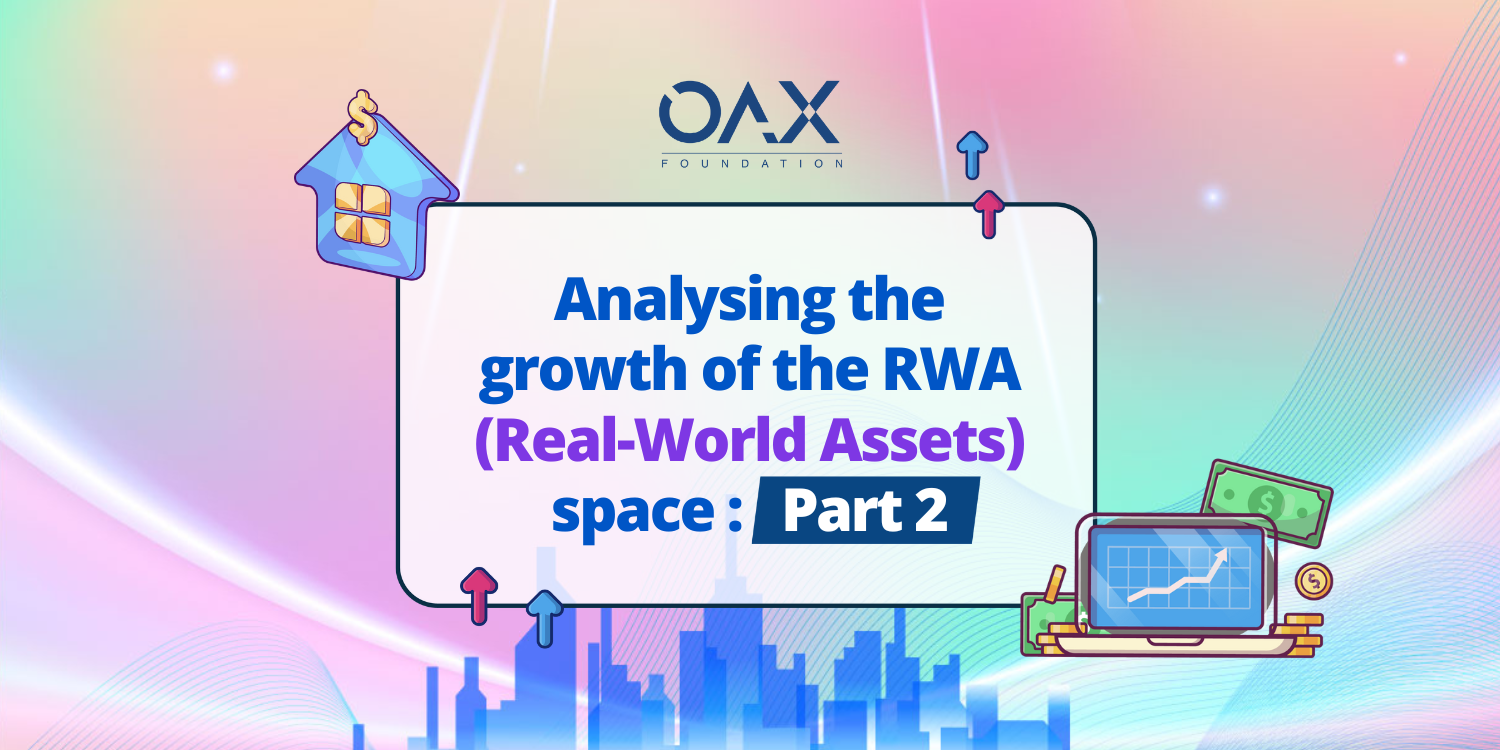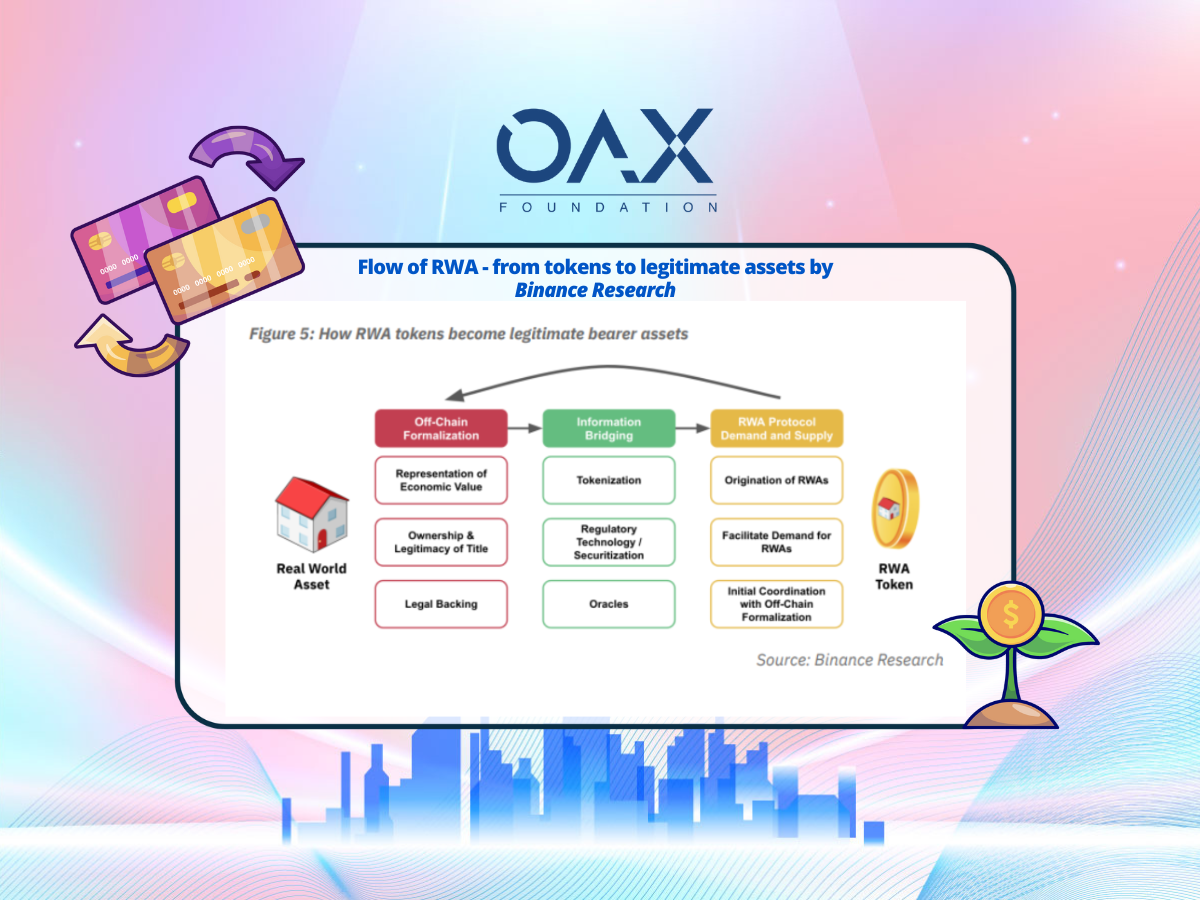
Part 2 of A Look At Real World Assets
In our previous article, we introduced the concept of Real World Assets (RWAs) and discussed the challenges and opportunities associated with them. In this follow-up piece, we will delve deeper into the mechanics of how RWAs work, explore the key players in the ecosystem, and examine what this emerging trend means for users.

The Nuts and Bolts of RWAs
Real World Assets are physical or financial assets that exist off-chain but are tokenized and brought on-chain to be utilized as a source of yield within the realm of Decentralized Finance (DeFi). The process of transforming RWA tokens into legitimate bearer assets can be broken down into three phases:
1. Identification: This phase involves gathering detailed information about the asset, including its nature, condition, price, ownership documentation, and other relevant factors, before it can be incorporated into DeFi.
2. Integration into the Network: During this phase, the information obtained during the identification stage is recorded on the blockchain. Additionally, legally mandated data and external sources are incorporated through the use of oracles—protocols that provide accurate and up-to-date information about the asset’s value. This integration ensures that the on-chain representation of the asset mirrors its true value in the real world.
3. RWA Management Protocol: To oversee all processes related to the disposition of the asset, a protocol is established. This protocol governs activities such as investment, utilization, and yield generation associated with the RWA.

Where Is The Yield Coming from?
Users prefer yield-generating assets over tokenized alternatives in Real World Asset (RWA) yields. They favor holding debt positions rather than equity, accepting counterparty and liquidity risks but avoiding price risk. Debt-based protocols allow users to lend assets for a fixed or variable interest rate, generating yield from off-chain opportunities. Yield-bearing stablecoins are commonly used, where stablecoin holders own a debt instrument issued by the RWA protocol. The market consolidates around U.S. Treasuries, real-world loans, and tokenized cash and carry trades as primary asset types for yield-bearing debt.
Examples of players in the RWA Field As the RWA space continues to evolve, many players have emerged around the globe, each contributing to the growth and development of this new frontier in finance.
-
Ondo Finance: recently launched Ondo USD Yield (USDY), a tokenized note that is overcollateralized by short-term US Treasuries and bank demand deposits. USDY provides investors with access to yield while offering an institutional-grade structure, which enhances security.
-
MakerDAO: known for its decentralized stablecoin DAI, has plans for the future called MakerDAO Endgame. As part of this vision, MakerDAO envisions heavy scrutiny and regulation of RWAs. To retain a certain level of technical sovereignty over such assets, MakerDAO is working towards acquiring Physically Resilient RWAs. RWAs also function as collateral in the Maker Protocol, requiring legal entities to represent MakerDAO in deals ratified by governance.
-
DigiFT: a relatively young regulated exchange for on-chain real-world assets from Singapore, has expanded its business in Hong Kong. The company has been selected to join the Cyberport Incubation Programme, highlighting its capabilities and focus on developing real-world assets in Hong Kong. This expansion aligns with Hong Kong’s efforts to regulate the digital asset and tokenization ecosystem and establish itself as a financial innovation hub.
Institutional Involvement and Consumers Impact
Institutions like BlackRock have collaborated with Securitize to create the BlackRock USD Institutional Digital Liquidity Fund, which suggests the potential tokenization of real-world assets. BlackRock’s CEO, Larry Fink, sees Bitcoin (BTC) and Ethereum (ETH) ETFs as stepping stones towards tokenization, aiming to increase efficiency and speed up settlements by leveraging the benefits of blockchain technology.
In Hong Kong, the location of the OAX Foundation, we are delighted to observe the embracing of blockchain-based real-world assets by HSBC. In a significant development last November, HSBC introduced the tokenization of gold for its customers through HSBC Orion, their digital asset platform. This progressive move by HSBC demonstrates the growing acceptance and integration of blockchain technology in traditional financial institutions.
The year 2024 has witnessed a growing interest from institutional investors in tokenized real world assets (RWAs). The value of tokenized assets across all public blockchains has already exceeded $118.57 billion, and projections suggest it could reach $10 trillion by 2030. Institutions such as JPMorgan, London Stock Exchange Group, UBS Asset Management, ABN AMRO, and Citigroup have launched tokenization initiatives for stocks, bonds, and other traditional investment products. This trend suggests that RWAs are poised to play a significant role in the future of finance, offering users and consumers new investment opportunities and potentially transforming the way traditional assets are accessed and traded. However as mentioned in our previous article, it’s crucial to consider challenges such as regulatory compliance that may vary across jurisdiction as well as the vulnerability of digital assets fraud and hacks. As a result, many of RWA protocols currently have strict AML and KYC processes, which may impact the sector’s widespread adoption.
Conclusion
Real World Assets have emerged as a promising avenue for bringing traditional assets into the decentralized realm of blockchain and DeFi. By tokenizing real assets, users can access new investment opportunities, earn yields, and participate in the growing ecosystem. As the OAX Foundation continues its support in the decentralized space, RWA has shown some early promises in delivering the practical use case the industry needs. With the participation of institutions, the integration of real world assets into DeFi brings forth several challenges and opportunities, including regulatory compliance, risk management, and increased liquidity. As the space evolves, it will be interesting to see how the ecosystem matures and how users and consumers continue to engage with tokenized real world assets.
Disclaimer: The above is an opinion piece written by an authorized author, but in no way represents the official standpoint of OAX Foundation Limited, nor should it be meant to serve as investment advice.


